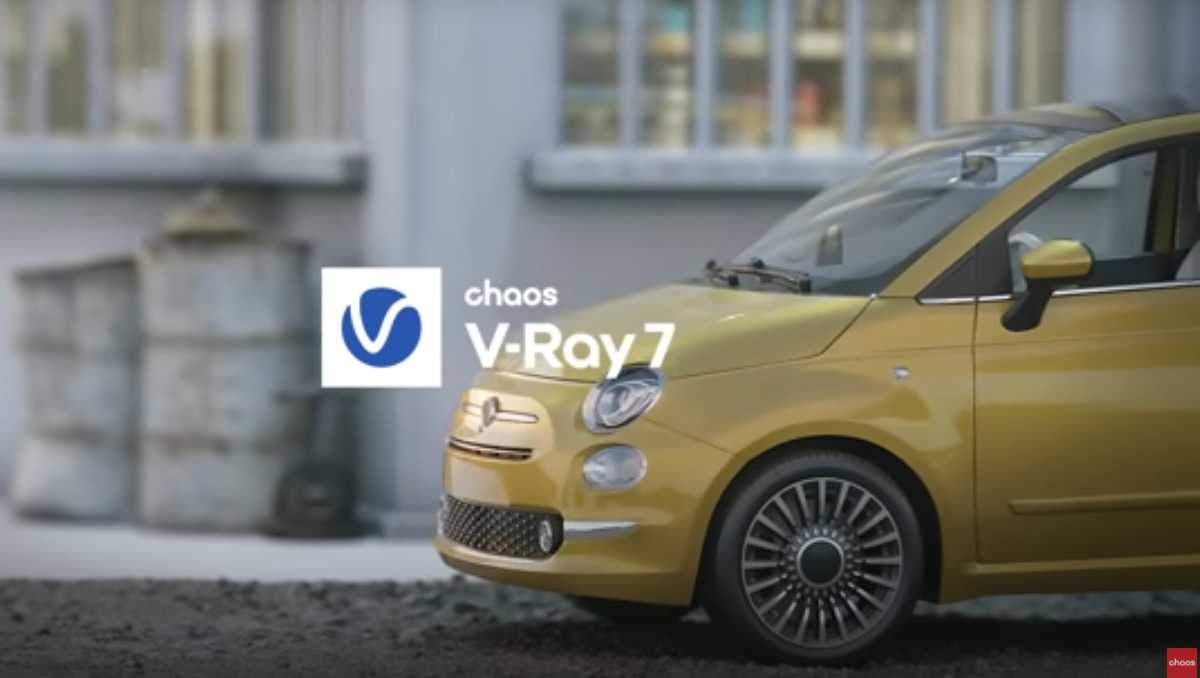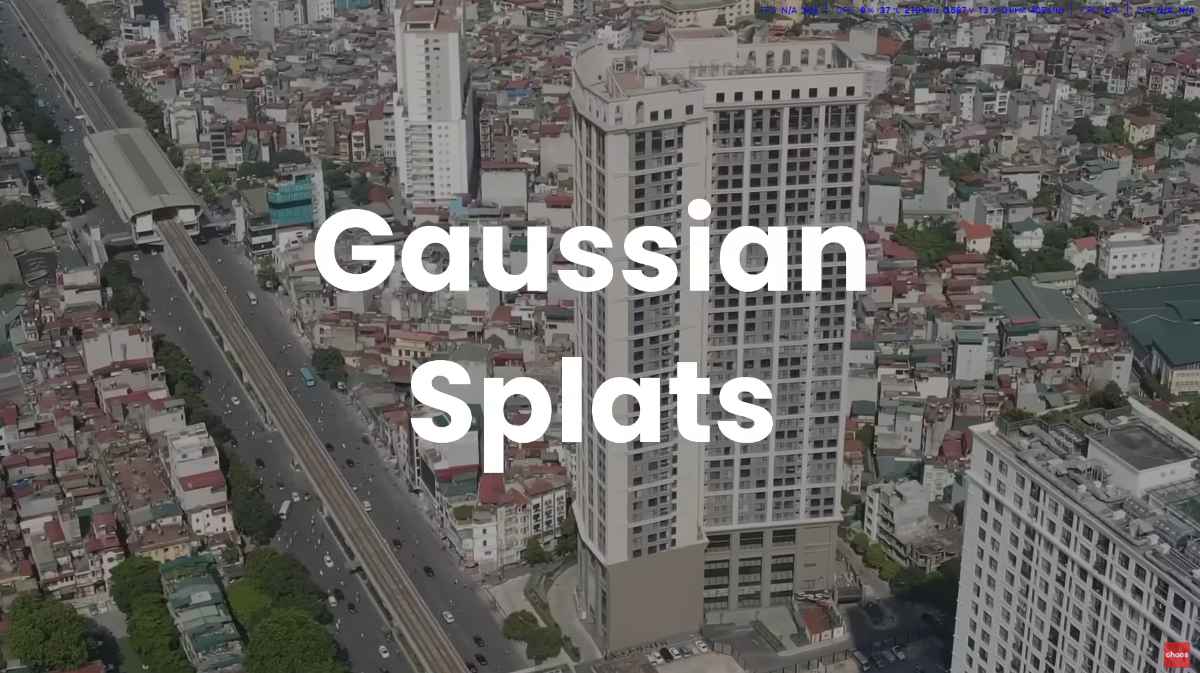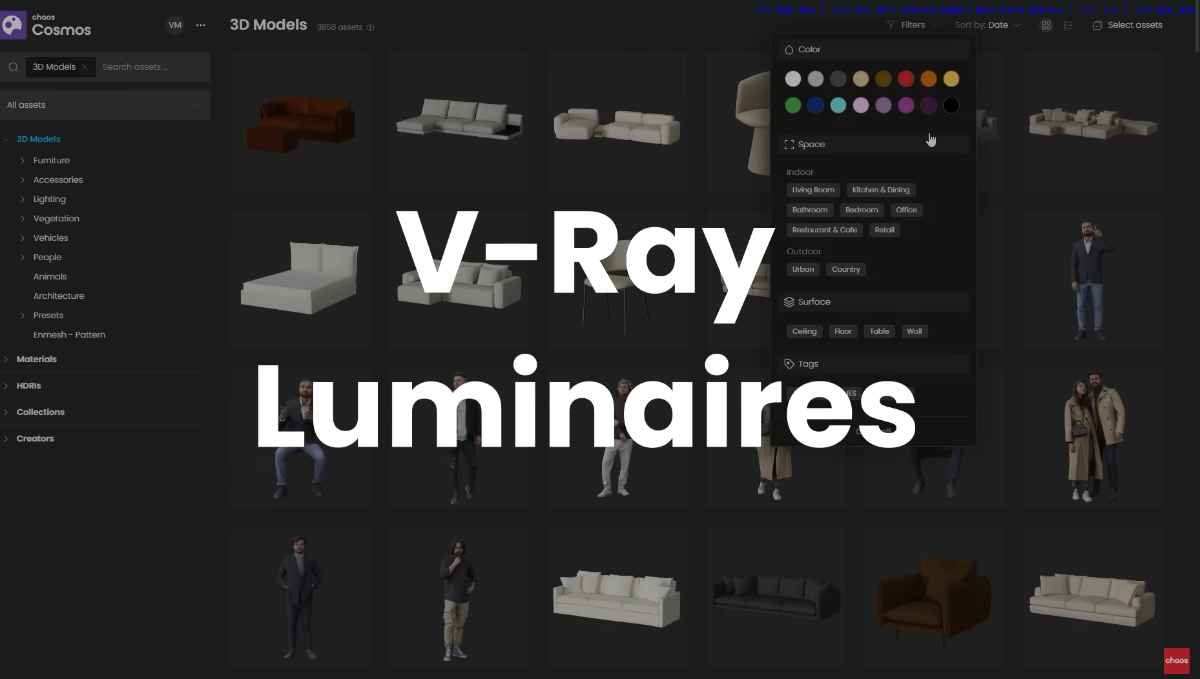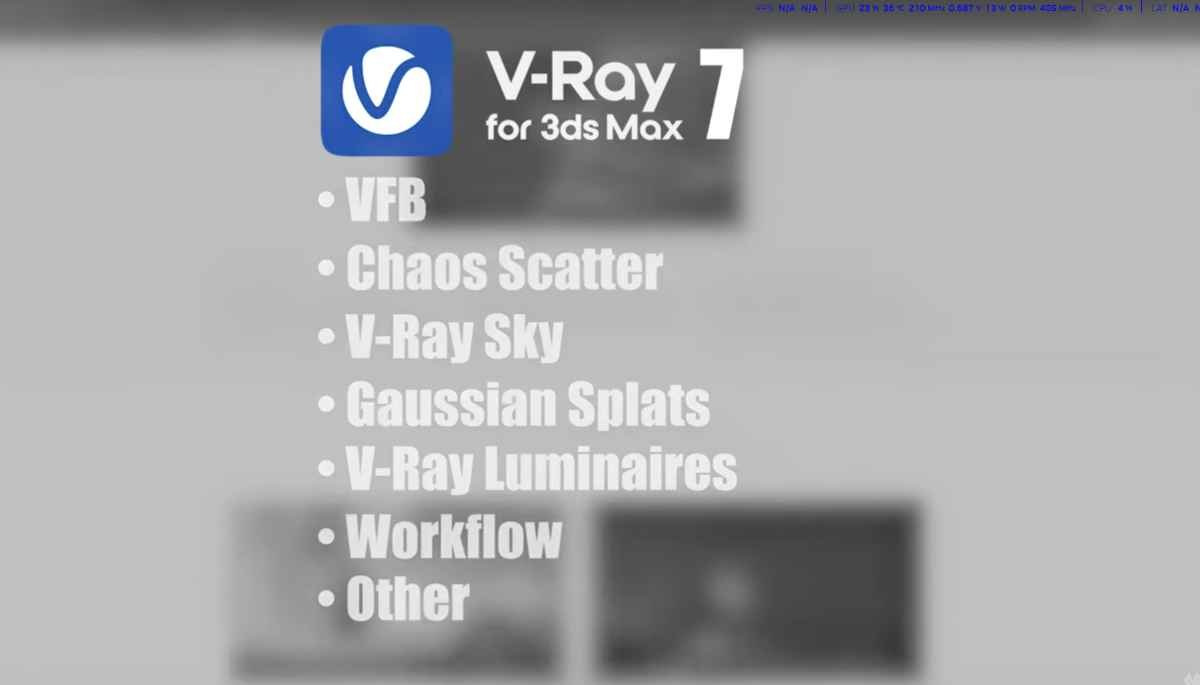V-Ray 7 in 2025 is a groundbreaking leap in 3D visualization technology, sparking viral buzz among artists, architects, and designers worldwide. With innovations like Gaussian Splatting, immersive virtual tours, and AI-powered materials, V-Ray 7 redefines what’s possible in rendering. This post uncovers the most powerful features and trends making V-Ray 7 the go-to renderer this year.

What is Gaussian Splatting and Why It’s a Game-Changer
V-Ray 7 is one of the first commercial renderers to support Gaussian Splatting—a cutting-edge method that reconstructs highly realistic 3D models from 2D photos and video. This technology drastically simplifies capturing real-world objects and integrating them into CGI environments, boosting realism in architecture and VFX through precise ray-tracing of light and shadow.

Interactive Virtual Tours with Chaos Cloud
V-Ray 7 introduces virtual tours via Chaos Cloud, allowing users to create interactive walkthroughs that clients can explore remotely without special hardware. Designers can add hotspots and floor plans making presentations engaging and perfect for real estate, education, and showroom experiences—a major viral hit of 2025.

OpenPBR Support and Advanced Material Control
With support for OpenPBR shading standard from Autodesk and Adobe, V-Ray 7 lets artists quickly layer materials to create effects from neon glows to velvet finishes. This streamlined workflow speeds up photorealistic texture creation, making V-Ray 7 essential for professional visualizers who demand precision and creative freedom.
Enhanced Frame Buffer & GPU Rendering
The updated V-Ray Frame Buffer (VFB) includes fine sliding controls and color correction presets like vignette layers for fast color grading directly within the renderer. GPU acceleration improvements deliver higher-quality output faster, enabling smooth workflows with realistic results in less time.
V-Ray 7 for Blender: Native, Powerful, and Complete
Highly anticipated V-Ray 7 for Blender offers full integration, blending seamlessly into Blender’s interface. It supports proxies, denoisers, Chaos Cosmos assets, and cloud rendering, empowering Blender users with rendering power previously exclusive to 3ds Max and Maya. This release radically boosted V-Ray’s popularity in the Blender community.

Why V-Ray 7 is Viral in 2025
- Breakthrough features not found in competitors: Gaussian Splatting and virtual tours
- Deep integration with top 3D tools: Blender, Maya, 3ds Max, Houdini
- User-friendly interfaces for shading and color grading
- AI-enhanced speed and quality in rendering
- Cloud services for interactive presentations and remote collaboration
V-Ray 7 in 2025 is more than software—it’s a creative platform elevating 3D rendering to the next level. Whether architecture, gaming, film, or design, V-Ray 7 provides an unmatched set of tools for realizing bold visions. Its viral success this year comes from bringing powerful technology to creative professionals in a way that’s accessible, fast, and visually stunning.
Suggested Alt Texts for Images
- “Rendering of a photorealistic architectural exterior using V-Ray 7 with advanced lighting and materials”
- “Screenshot of V-Ray 7 for Blender interface showing material layers and viewport preview”
- “Virtual tour created in Chaos Cloud showcasing a modern interior design with interactive hotspots”
- “Close-up of Gaussian Splatting effect producing detailed 3D reconstruction from photographs”
- “Comparison of GPU vs CPU rendering speeds and quality enhancements in V-Ray 7”
- “Material override options in V-Ray 7 Frame Buffer with vignette and color correction presets”
On our site, you can freely and freely download various versions of V-Ray for Maya, 3ds Max, and SketchUp. To get access, just follow the links and subscribe to our Telegram channel.
Join us here: Telegram
Visit our website: geomedia.gala100.net